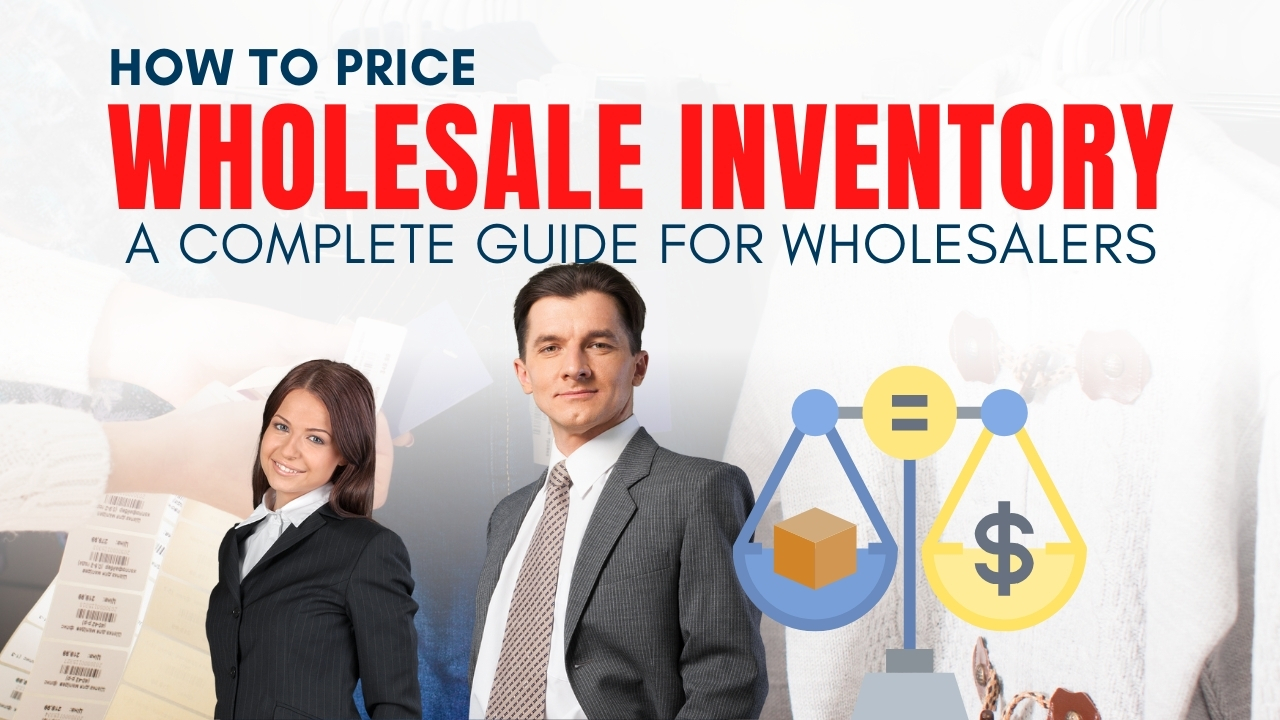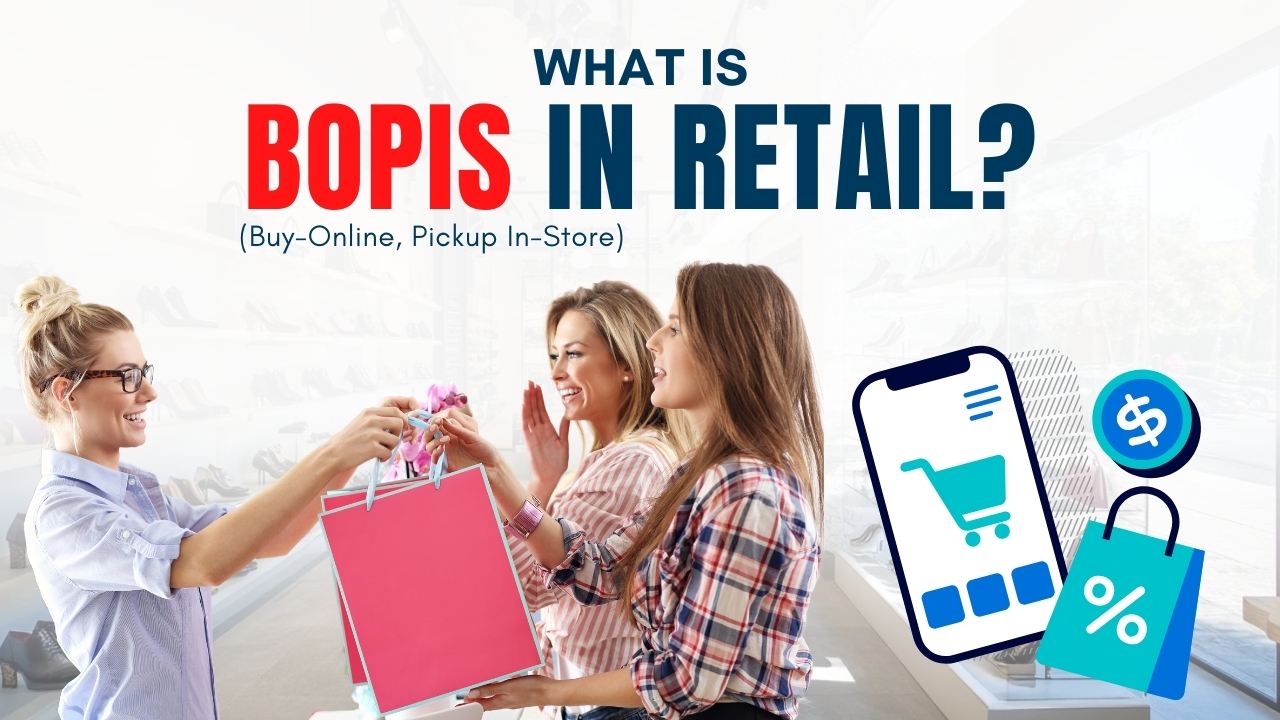Blog
How To Price Wholesale Inventory: A Complete Guide For Wholesalers
October 23, 2024 / 12 minute read / By Zoya Naeem

Blog

Getting wholesale pricing right can feel challenging. On one hand, you need to make sure your prices cover your costs and leave room for profit. On the other hand, if your prices are too high, retailers might hesitate to buy from you -or worse, they’ll struggle to sell your products at a competitive price.
Finding that sweet spot in your pricing not only helps you run a profitable wholesale business but also supports your retail partners. When retailers can confidently price your products and still maintain their margins, it’s a win-win for everyone.
That’s exactly what we’re talking about in this article. Whether you’re a retailer just starting out or a seasoned wholesaler, understanding wholesale pricing strategies is crucial to running a profitable business. And this guide will break down everything you need to know about wholesale pricing, including:
Wholesale pricing is essentially the price you, as the retailer, pay to buy products in bulk from a manufacturer or distributor. It’s lower than the price consumers pay because you’re purchasing in bulk quantities. The goal here is simple -you get a discount because you’re buying more units at once, and you then resell those products to your customers at a higher price.
You can think of it like this: manufacturers or suppliers give you a deal because you’re buying in large quantities, and it makes sense for them to offer a lower price. They want you to succeed in selling their products and giving you a wholesale discount helps both sides win.
But just because you get a lower price doesn’t mean your wholesale pricing can be random. It must cover your costs and leave you with a healthy profit margin. This is where understanding the true costs of your products and creating a pricing strategy becomes really important.
If you’re managing a lot of wholesale inventory and juggling different vendors, things can get complicated fast. This is where a good POS system with vendor integrations can be a game-changer. By using a POS system that allows you to import product catalogs directly from your suppliers, you can automate time-consuming tasks like updating stock levels, generating purchase orders, and even offering drop-shipping options. This means less manual work, fewer errors, and a more streamlined process from the moment you place an order to when your customer receives it.
Retail pricing is the amount a customer pays for a product in your store or online marketplace. As a retailer, you set this price after purchasing products at a wholesale rate. The goal is to not only cover your wholesale costs but also account for overhead expenses such as rent, staffing, and utilities, while ensuring a healthy profit margin.
Now, setting the right retail price isn’t as simple as doubling your wholesale cost. You’ve got to consider things like:
Retail pricing is all about finding that balance, covering your costs and offering a price that’s competitive but also leaves room for profit.
When it comes to setting prices, it’s not always about guessing or following the competition. The most successful retailers use data to stay ahead of the game. And an all-in-one POS system with AI capabilities can do just that by dynamically adjusting your prices based on real-time data like past sales, supply and demand, and industry trends. By using this kind of technology, you’ll spend less time manually tweaking prices and more time focusing on the big picture.
Setting the right wholesale price might feel overwhelming at first, but once you break it down, it’s straightforward. The key is to make sure your price covers all your costs while leaving enough room for profit.
If you’re a wholesaler, here’s a simple step-by-step process to help you calculate your wholesale price:
The first thing you need to figure out is how much it actually costs you to produce or source each item. This is more than just the raw cost of the product itself, it includes every little thing that goes into bringing that product to life:
Once you’ve got a clear picture of your costs, it’s time to think about your profit margin -the amount of profit you want to make on each item. Most wholesalers aim for something in the 20%-50% range, depending on the product and industry.
Here’s a simple formula to help with this:
Wholesale Price = Cost of Goods + (Cost of Goods x Profit Margin)
Let’s say you’re selling hand-crafted leather wallets, and each wallet costs you $15 to produce. You want a 40% profit margin on each item. Here’s how you’d calculate your wholesale price:
Wholesale Price = $15 + ($15 x 0.40)
Wholesale Price = $15 + $6 = $21
Your wholesale price for each wallet would be $21. This would cover your costs and earn you a 40% profit.
It’s one thing to know your costs and margins, but you also need to keep an eye on the market. If your wholesale prices are way higher than your competitors, you risk pricing yourself out of the game. Make sure you do some research on what similar products are being sold for and see if there’s room to stay competitive while maintaining your margins.
Offering discounts on larger orders is a common way to encourage retailers to buy in bulk. The idea is simple: the more they buy, the more they save. Just make sure the discounted prices still cover your costs and give you a decent profit.
For example, you might offer a 10% discount for orders over 500 units. So, if your wholesale price is $21 per wallet, a retailer ordering 500 wallets would pay:
$21 – ($21 x 0.10) = $18.90 per wallet.
While you’re making less per unit, the larger order can make up for it in volume.
Let’s say you’re selling a more expensive product, like custom-designed office chairs. In this case, you need to factor in extra costs beyond just the materials. Let’s break it down:
To calculate the wholesale price, here’s what you do:
Wholesale Price = ($100 + $15 + $30) + [($100 + $15 + $30) x 0.35]
Wholesale Price = $145 + ($145 x 0.35) = $145 + $50.75 = $195.75
So, your wholesale price per chair would be $195.75. This price covers all your costs and gives you a 35% profit margin. From there, you can decide if you want to offer any discounts on larger orders, but always make sure your base price makes sense for your business.
As a retailer, you’d want to get your products in front of more customers without creating extra work for yourself; choosing an all-in-one POS system with popular marketplace integrations can be a game-changer. Think about all the major platforms like Amazon, eBay, Walmart, and even Locally -each one opens up a new audience for your products.
A POS system like Celerant’s Stratus Enterprise lets you manage everything in one place. From syncing your inventory across multiple marketplaces to processing orders and updating stock levels automatically, you’ll save hours of manual work.
As a wholesaler, setting the right price is crucial -not just for covering your costs, but for ensuring your retail partners can make a profit too. Here’s a breakdown of the main wholesale pricing methods, so you can choose the one that fits your business model and product range:
This is a straightforward approach where you add a fixed percentage on top of your production or sourcing costs to set your wholesale price.
For example, if it costs you $50 to produce a product, and you want to add a 40% margin, your wholesale price would be:
Wholesale Price = $50 + ($50 x 0.40) = $70
This ensures you’re covering your costs while giving retailers enough room to mark up the product and make a profit.
With market-based pricing, you set your price based on what your competitors are charging. This helps ensure your products are priced competitively in the wholesale market, so retailers can easily compare.
If other wholesalers are selling similar products for around $100, you would want to price your product somewhere in that ballpark, depending on your brand position and margins.
Value-based pricing means setting your wholesale price according to the perceived value of your product to the retailer and their end customers. This method is less about your costs and more about how much value your product adds to the market.
For example, if your product has unique features or a strong brand presence, retailers may be willing to pay a premium. You might set your wholesale price at $150, even though your product costs are only $50, because the perceived value is much higher.
Dynamic pricing lets you adjust your wholesale prices based on real-time factors, like market demand or seasonal shifts. It allows you to stay competitive and flexible, especially if your products are sensitive to changes in demand.
During peak seasons, like back-to-school or the holiday rush, you might raise prices slightly to reflect increased demand, and then lower them during off-seasons to encourage more bulk orders.
Setting the right wholesale pricing strategy isn’t just about numbers – it’s about making sure your business thrives while creating win-win situations for your retail partners. Here are four key tips to help you find that sweet spot and maximize your profits:
Offering discounts for bulk orders can be a great way to move large quantities of product and keep your retail partners happy. However, you need to make sure those discounts don’t cut too deep into your margins. Create volume pricing tiers that give retailers an incentive to order more while still allowing you to maintain profitability.
It’s always a good idea to know what others in your industry are charging, but be cautious about trying to undercut everyone. Competing on price alone can hurt your bottom line and set unrealistic expectations. Instead, use competitor prices as a guide and focus on differentiating yourself in other ways -like quality, service, or unique product features.
The market is always shifting, and your prices need to shift with it. Whether it’s rising costs of goods, changes in demand, or new competition entering the scene, your wholesale prices shouldn’t be set in stone. Keep an eye on trends, adjust your prices when necessary, and remain flexible to keep your margins intact.
Review your pricing at least quarterly or whenever there’s a significant change in the market or your product costs. This will help you stay profitable without catching your retailers off guard.
Your pricing strategy should always take into account the relationship you have with your retail clients. If your wholesale prices are too high, retailers may struggle to mark up your products and turn a profit. But if you work together and set prices that benefit both sides, you’ll create long-lasting partnerships that lead to repeat business.
Open the lines of communication with your retailers. Get their feedback on your pricing to ensure it works for both sides. A healthy, profitable relationship is built on trust and mutual success.
As a wholesaler, finding the right tools can make all the difference in running a smooth operation and scaling your business.
At Celerant, we understand the unique challenges wholesalers face, and we’re here to offer more than just a POS system. We build long-term partnerships that are designed to help you streamline your processes, optimize your pricing strategies, and manage inventory more efficiently -all while connecting seamlessly with your retail clients.
With our integrated POS solutions, retailers have access to powerful marketplace integrations (like Amazon, eBay, Walmart) and vendor management tools, helping them stay competitive without the headache of juggling multiple platforms.
As a wholesaler, partnering with us opens up co-marketing opportunities within our extensive retail network, giving your wholesale business a boost and helping you reach new customers.
If you are ready to take your wholesale business to the next level
 Discover how BOPIS can help you improve sales and customer satisfaction. And how using the right retail… |
 Tis the season, so be ready! Read these quick 5 tips about being successful over Black Friday and Cyber… |